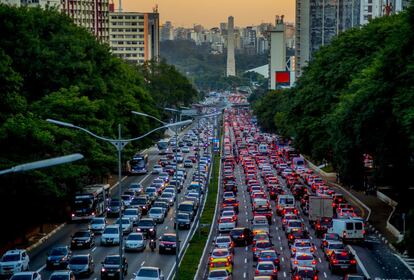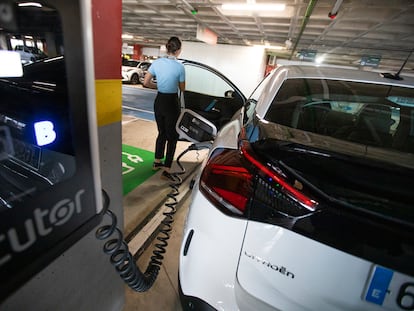Urbicide, or the liturgical murder of the city
This issue defines the problems of the city’s destruction to better understand the meaning of urban development in terms of its citizens’ quality of life

Cities account for 56% of the population, 75% of energy consumption and 82% of the world economy. Along with the state and private transnational corporations, the city is one of three major global players. Nevertheless, the city has never been destroyed as much as it is today. Urbicide, the central theme of a recently published book of the same name, attempts to explain this process.
The concept is made up of two words with Latin roots: urbs—meaning city—and -cide, meaning death; that is, the death of the city. But it is not a death by natural causes; it is an aggravated crime, premeditated and committed with malice aforethought. It is a liturgical murder carried out with explicit orders and forms by specific public and private actors. However, it does not mean the death of all cities, nor the end of the city; it refers to the death of some cities, of certain essential components and dynamics. It is destruction that does not lead to the disappearance of cities, as some authors believe is happening.
Medicine, which studies life and its vicissitudes, identifies the body’s pathologies (diagnosis) to prevent, heal and decrease death. Urbicide is similar: it recognizes the city’s problems to correct them in order to prevent death. It is a hopeful view, showing that what is harmful must be rethought so that the making of the city prevails.
Urbicide implies a change in our method of understanding the city, which starts from a negative interpretation: one that is less about how the city is produced and more about how it is destroyed, it focuses less on memory and more on oblivion. The idea is to highlight the destruction that emerges in the production of the city and in the attendant ways of understanding it. It seeks to explain what is lost, what is destroyed and, above all, why that happens. That is to say, the concept of urbicide is about understanding the structural causes of the city’s degradation to comprehend, confront and counteract them and generate alternative proposals.
It is a theoretical approach that integrates the negative forms of the city to contribute to its development. In other words, it is a critique of urban development models that strengthen inequality, fragmentation, exclusion, de-urbanization and sub-urbanization to restore the sense of the city as a good place in which to live happily.
Urbicide is expressed ubiquitously, massively, selectively, sectorially or partially in cities, according to the following typology:
Historical urbicide is conceived within the law of denial of negation and sustained with the new negating the old. There is always a stage of a city’s death that gives way to the birth of a new one. Thus, for example, the classical city’s death gave way to the modern city’s emergence. The global city emerged from this process, and the walled city gave way to the industrial city.
Natural urbicide stems from the fact that the city is an artificial space produced by humanity and its social norms, while the environment is based on natural laws. An ecosystem is configured through this relationship; when the balance is broken—as happens with climate change—it is returned with devastating effects (fires, droughts). In addition, we have hurricanes (New Orleans), earthquakes (Port-au-Prince), volcanic eruptions (Antigua Guatemala) and other natural disasters.
Anthropic urbicide emerges from pathologies introduced by the market and public policies. But it also comes from the impact of wars (Sarajevo, Aleppo); violence (Medellin, Ciudad Juarez); terrorist attacks (New York, Lima); the market (Santiago, Guayaquil); inequalities (São Paulo, Buenos Aires); tourism (Venice, Cusco); motoring (Detroit, Bogota); urban extractivism (Caracas, Monterrey) and cultural conservation (Quito, Salvador de Bahia).
Urbicide defines the problems of the city’s destruction to better understand the meaning of urban development, in terms of its citizens’ quality of life.
Sign up for our weekly newsletter to get more English-language news coverage from EL PAÍS USA Edition
Tu suscripción se está usando en otro dispositivo
¿Quieres añadir otro usuario a tu suscripción?
Si continúas leyendo en este dispositivo, no se podrá leer en el otro.
FlechaTu suscripción se está usando en otro dispositivo y solo puedes acceder a EL PAÍS desde un dispositivo a la vez.
Si quieres compartir tu cuenta, cambia tu suscripción a la modalidad Premium, así podrás añadir otro usuario. Cada uno accederá con su propia cuenta de email, lo que os permitirá personalizar vuestra experiencia en EL PAÍS.
¿Tienes una suscripción de empresa? Accede aquí para contratar más cuentas.
En el caso de no saber quién está usando tu cuenta, te recomendamos cambiar tu contraseña aquí.
Si decides continuar compartiendo tu cuenta, este mensaje se mostrará en tu dispositivo y en el de la otra persona que está usando tu cuenta de forma indefinida, afectando a tu experiencia de lectura. Puedes consultar aquí los términos y condiciones de la suscripción digital.
More information
Últimas noticias
Trump claims peace in Ukraine is near, but Moscow suggests otherwise
A survivor’s account of the Interoceanic Train accident: ‘We were scared because of the speed on the curve’
The Interoceanic Train, the Mexican alternative to the Panama Canal
What is known about the Interoceanic Train derailment in Oaxaca
Most viewed
- Oona Chaplin: ‘I told James Cameron that I was living in a treehouse and starting a permaculture project with a friend’
- Reinhard Genzel, Nobel laureate in physics: ‘One-minute videos will never give you the truth’
- Why the price of coffee has skyrocketed: from Brazilian plantations to specialty coffee houses
- Pablo Escobar’s hippos: A serious environmental problem, 40 years on
- Chevy Chase, the beloved comedian who was a monster off camera: ‘Not everyone hated him, just the people who’ve worked with him’










































